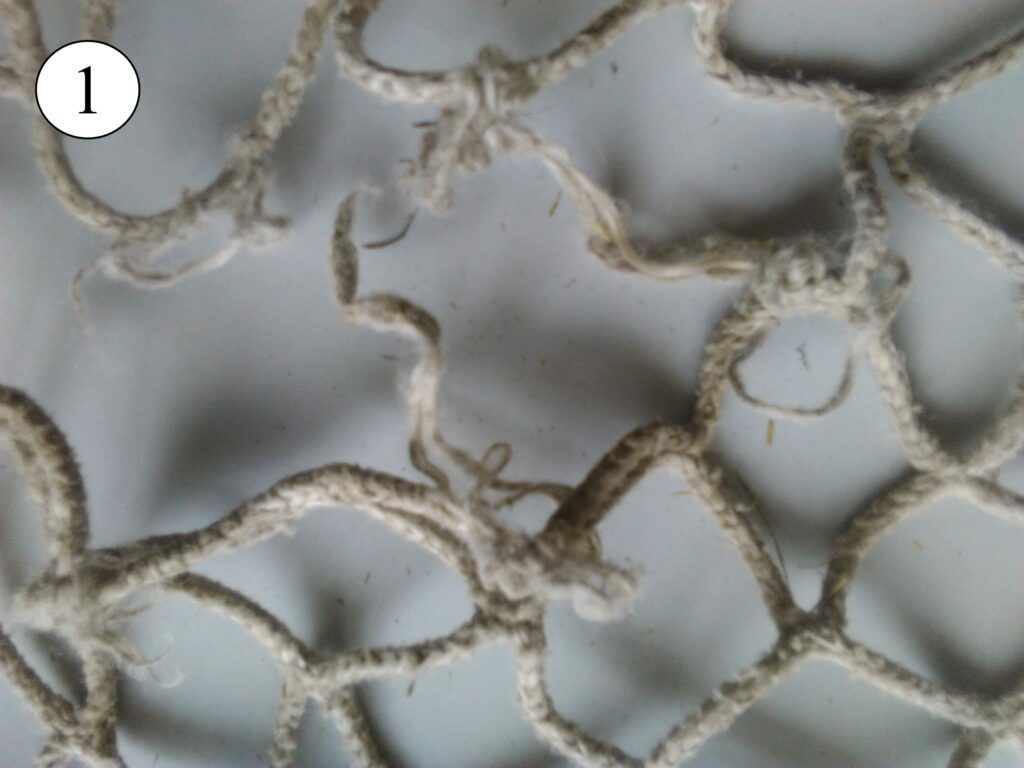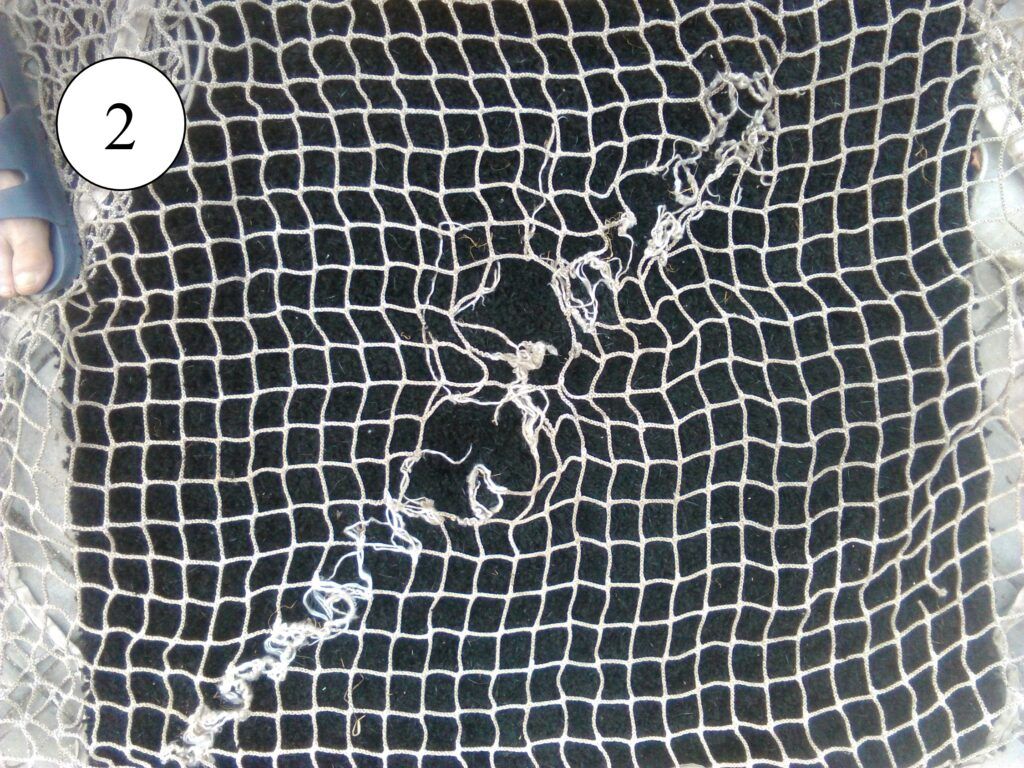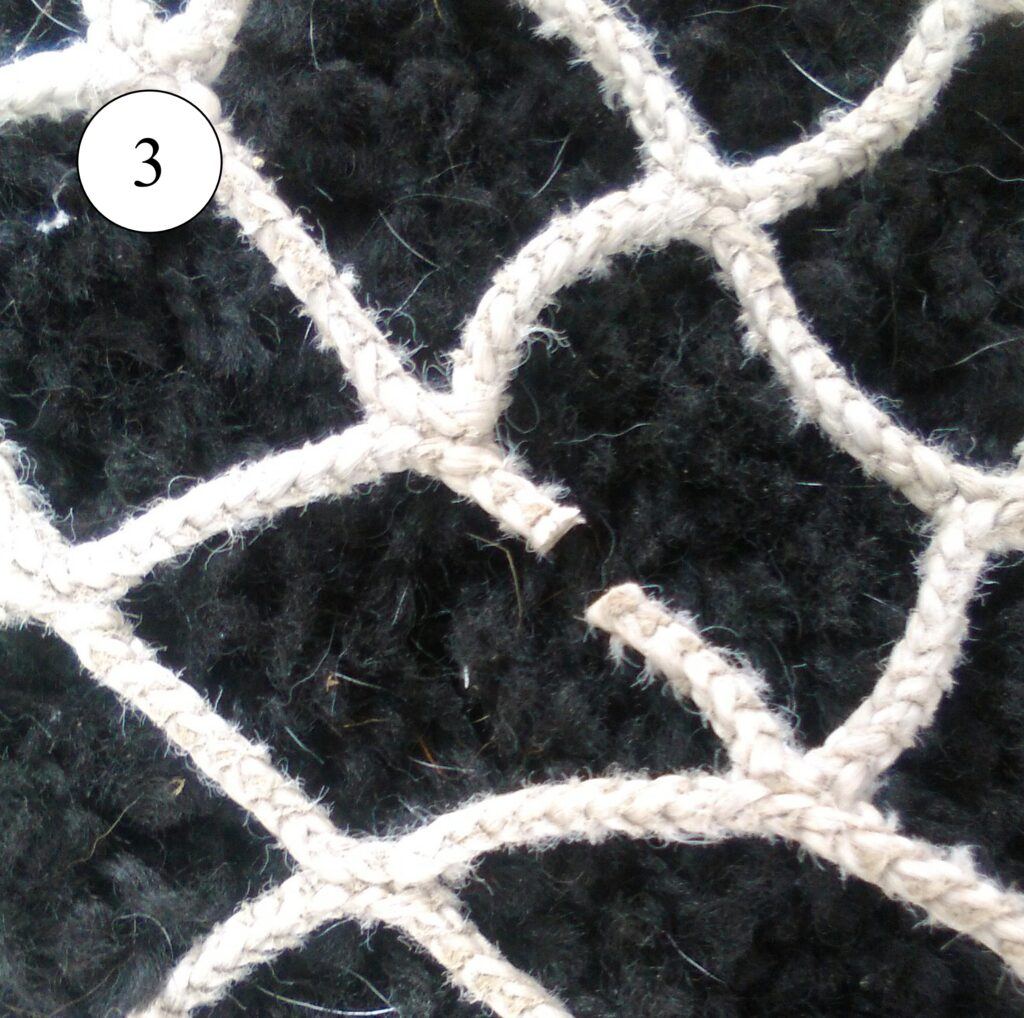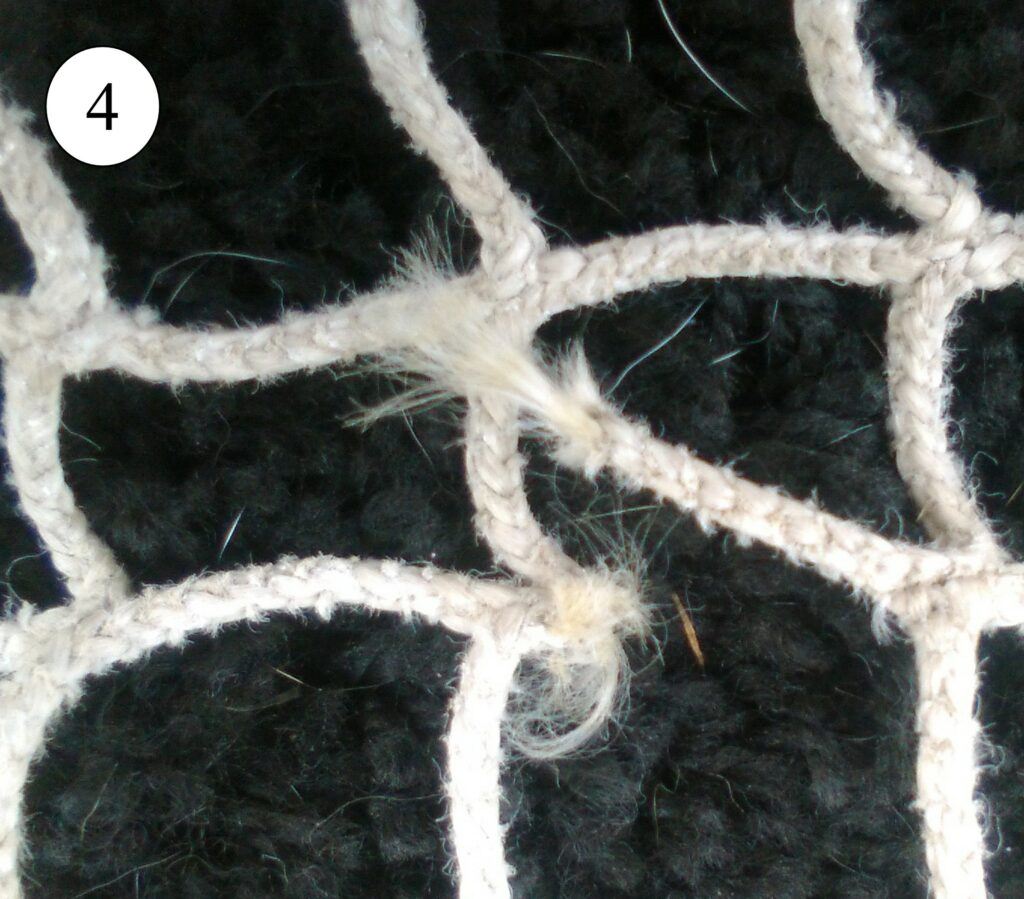Schooling your horse to SlowFeeding.
Warranty & Transition Guide
Helping Your Horse Transition to Real SlowFeeding® — and What’s Covered
Teaching Your Horse to Eat Naturally
All horses can learn to eat calmly and comfortably through a SlowFeeding net. For most, this takes just a few minutes. In some cases — especially if a horse has experienced food-related trauma — the process may take days or even weeks.
Many horses fed in portions suffer from feeding stress caused by the trauma of repeatedly running out of food. This is unnatural and deeply upsetting to a horse’s nervous system.
We recommend this simple transition method:
- For the first few days, continue feeding your horse the same way you did before.
- Add the SlowFeeding net as a bonus — filled and placed next to the usual loose hay.
- As soon as your horse starts eating from the net before finishing the loose hay, you can stop offering loose hay entirely.
Product Quality
Our SlowFeeding SMHN Original nets are made from heavy-duty polyester, originally developed for deep-sea trawling. This material is chosen for:
- Exceptional durability
- Superior abrasion resistance (better than nylon)
- Low water absorption (stays cleaner and doesn’t freeze stiff)
- Full UV resistance — sunlight will not degrade the net
The mesh design and fabric structure make it virtually impossible for a material defect to cause a row of holes, as each mesh is made from entirely individual fibers, interwoven diagonally.
Limited 1-Year Warranty
We stand behind the craftsmanship and quality of the SMHN Original.
What’s Covered:
We offer a one-year limited warranty from the date of purchase covering:
- Manufacturing defects, specifically:
- Broken sewing twine that causes the webbing to come loose.
In the rare case this happens, it is usually due to a slightly damaged needle on the industrial sewing machine impairing the twine during manufacturing. We change needles regularly, but this kind of defect may not be visible until much later.
If your net’s webbing becomes loose due to faulty sewing twine, we will replace the product free of charge.
What’s Not Covered:
- Damage caused by chewing, biting, or pulling on the net
- Damage due to sharp objects, shod hooves, or external wear and tear
- Broken or torn mesh not caused by sewing defects
- Normal wear over time
If two or more mesh openings in a row are torn, this is almost always due to external causes, not a material failure — because the fibers in each mesh are not structurally connected to the next.
So… What About Broken Nets?
If your net breaks, don’t panic. We’re here to help you troubleshoot. Most issues are easily preventable or repairable with a simple change in placement or usage. We’re happy to advise.
And if the problem is due to a fault in workmanship, we’ll make it right.
Please contact us with a photo and a description of the issue so we can help assess the situation fairly and quickly.
Nets can break for 5 different reasons:
1, It’s easy to see if a horse is to blame for a broken hay net. A frustrated horse has been chewing on the net for hours. This is very easy to detect since a chewed-on net has a very specific appearance. Frustrated horses are not covered by warranty and no material can withstand a frustrated horse. Not even steel would. How big a hole a horse can chew depends on how much time they spend doing it.

2a. If the damage goes diagonally and more than one wire is involved it’s probably a human error. Tractors are good at breaking nets and they can cause any size holes. Looks like 2a but usually more than 1 mesh is broken following the lines of the meshes.

2b. If the damage keeps going diagonally and only one wire is involved then it might be
a mistake made in the production of the net material (a bad needle) and the net will be replaced. SlowFeeding SMHN Original is of very high quality and we have only once in over 200 tons of nets
experienced an issue with the net material.
3. A sharp tooth can cut a mesh. This is very rare, but I have seen it happen. It only cuts a
single mesh.

4. If a hook on a halter or blanket has gotten stuck in the net and a mesh broke when the horse pulled it loose. This is rare and only beaks a single mesh.

This is what you need to do:
You must check a net in use every day and if you see a broken mesh you must tie it together immediately. Take a photo of the hole before and after you have mended it and email them to holes@slowfeedingnets.com for evaluation. If we find it to be a warranty issue we will email you a return code and a domestic return address to where you can send the net to get it replaced.
The easiest way to mend a broken mesh is to pull it together with a zip tie but any piece of twine or string works. If the hole was caused by a frustrated horse he might very well chew a new hole at his next opportunity so there is no reason to buy a new net just yet. Make sure to leave a little hay outside the net for the frustrated horse and keep mending the net until he has stopped chewing holes in it. As soon as he has gotten used to the net he will stop chewing holes in it.
Even though warranty issues are extremely rare (0.2% = 2 out of 1000) we recommend everyone to report holes in nets because we do feel sympathy with nice people with bad luck.
SlowFeeding SMHN Original nets can be machine washed at any temperature (or even boiled to be sterilized)
SlowFeeding SMHN Original® is owned and produced by SlowFeeding Industries s.r.o.